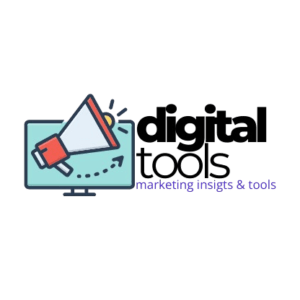Introduction
Imagine a world where ads find the perfect audience at the perfect moment—without human intervention. That’s the power of programmatic advertising, the backbone of automated marketing in 2025.
Gone are the days of manual ad buys and guesswork. Today, AI-driven algorithms analyze billions of data points in milliseconds, delivering hyper-targeted ads with surgical precision. By 2025, programmatic ad spending is expected to surpass $725 billion globally (Statista), making it the dominant force in digital advertising.
But what exactly is driving this shift? How can businesses leverage automated marketing to stay ahead?
In this deep dive, we’ll explore:
✔ The latest programmatic advertising trends shaping 2025.
✔ Real-world case studies of brands winning with automation.
✔ Practical strategies to implement programmatic ads effectively.
Let’s unlock the future of advertising—where machines and data work smarter, not harder.
Why Programmatic Advertising is the Future of Automated Marketing
Programmatic advertising isn’t just a trend—it’s a fundamental shift in how ads are bought, placed, and optimized. Here’s why it’s unstoppable:
1. Unmatched Efficiency & Precision
- Real-time bidding (RTB) allows ads to be purchased in milliseconds, targeting users based on behavior, demographics, and intent.
- AI optimization ensures ads perform at peak efficiency, adjusting bids dynamically for maximum ROI.
2. Explosive Growth in Adoption
- 90% of all digital display ads will be programmatic by 2025 (eMarketer).
- Retailers using programmatic ads see a 30% higher conversion rate (Google).
3. Hyper-Personalization at Scale
Unlike traditional ads, programmatic leverages first-party data, AI, and machine learning to serve personalized messages—think dynamic creatives that change based on user preferences.
Example:
Netflix uses programmatic retargeting to recommend shows based on viewing history, increasing engagement by 35%.
Top Programmatic Advertising Trends for 2025
1. AI & Machine Learning Take Over
AI isn’t just optimizing bids—it’s predicting consumer behavior.
Key Developments:
- Predictive analytics forecast which users are most likely to convert.
- Creative automation generates thousands of ad variations in seconds.
- Fraud detection blocks non-human traffic with 99% accuracy (IAS).
Actionable Tip:
Use tools like Google’s Performance Max or The Trade Desk’s Kokai to automate AI-driven campaigns.
2. The Rise of Privacy-First Advertising
With cookie deprecation and stricter data laws (GDPR, CCPA), programmatic is evolving:
- Contextual targeting (ads based on webpage content, not user data).
- Universal IDs (like Unified ID 2.0) replacing third-party cookies.
- First-party data strategies (e.g., loyalty programs, zero-party data).
Example:
Coca-Cola shifted to contextual ads in 2024, seeing a 22% lift in engagement without cookies.
3. Connected TV (CTV) & Programmatic Video Dominate
- CTV ad spend will hit $42 billion by 2025 (Magnite).
- YouTube and Hulu use programmatic to serve personalized video ads.
Pro Strategy:
Run programmatic CTV ads through platforms like Roku Ads or Amazon DSP.
4. Voice & Conversational Ads Enter the Game
With 55% of households owning smart speakers (NPR), voice-activated ads are the next frontier.
How It Works:
- Brands bid for voice ad slots on Alexa or Google Home.
- Dynamic audio ads personalize messages based on user queries.
Example:
Domino’s uses programmatic voice ads to suggest pizza deals when users ask Alexa for dinner ideas.
5. Blockchain for Transparency & Anti-Fraud
- Ad fraud costs $100B+ yearly (ANA).
- Blockchain verifies real impressions, ensuring advertisers pay only for genuine engagement.
Tool to Try:
Meta’s blockchain ad verification pilot reduces fraud by 40%.
How to Leverage Programmatic Advertising in 2025
Step 1: Define Your Goals
- Brand awareness? Lead gen? Conversions? Align KPIs with bidding strategies.
Step 2: Choose the Right Demand-Side Platform (DSP)
Top DSPs for 2025:
✔ Google DV360 (best for omnichannel).
✔ The Trade Desk (premium inventory).
✔ Amazon DSP (e-commerce focus).
Step 3: Leverage First-Party Data
- Use CRM data, email lists, and surveys to build custom audiences.
Step 4: Optimize Creatives for Automation
- Dynamic creative optimization (DCO) tailors ads in real-time.
- Test multiple headlines, CTAs, and visuals.
Step 5: Monitor & Adjust in Real-Time
- Track CTR, viewability, and ROAS.
- Use AI-powered analytics (like Adobe Advertising Cloud).
Real-World Success Stories
Case Study 1: Nike’s Programmatic Dominance
- Used AI-driven audience segmentation to target sneaker enthusiasts.
- Increased ROAS by 50% with dynamic product ads.
Case Study 2: Airbnb’s Hyper-Local Campaigns
- Deployed programmatic geotargeting to promote stays in trending locations.
- Boosted direct bookings by 27%.
The Risks & How to Avoid Them
❌ Ad Fraud → Use IAS or DoubleVerify for verification.
❌ Brand Safety Issues → Blacklist unsafe sites via DSP settings.
❌ Over-Automation → Balance AI with human oversight.
Conclusion: The Future is Automated
Programmatic advertising isn’t just the future—it’s the present. By 2025, brands that ignore automated marketing risk falling behind competitors who leverage AI, privacy-safe targeting, and cross-channel automation.
Your Next Move:
🚀 Start small—test a programmatic campaign on Google Ads or The Trade Desk.
📊 Track results and refine based on data.
💡 Stay ahead—subscribe to our newsletter for the latest programmatic insights!


Add a Comment